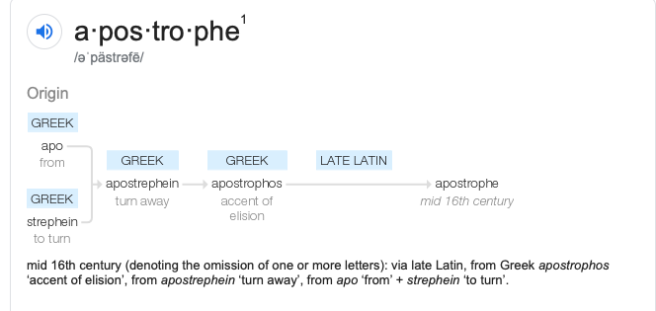For such a tiny punctuation mark, apostrophes sure seem to cause a lot of problems.
Here’s the basic rule for apostrophes:
Use an apostrophe to:
- Show possession
- Show where other letters should be
Do not use an apostrophe to:
- Make something plural
That’s about the gist of it. Are there exceptions? Sure. There usually are, with grammar. But if you can commit to getting to where you feel comfortable with the above, you will find that your writing is suddenly clearer, the clouds will part, the sun will shine, and angels will sing from the heavens.
Okay, not really, but using apostrophes correctly really does make a difference in your writing.
Here are some examples to illustrate the above:
Show Possession
The keys are Jennifer’s.
You don’t have multiple Jennifers, right? (see? No apostrophe = plural)
But the keys belong to Jennifer. She possesses them. They are Jennifer’s keys.
You use an apostrophe to show that that the keys belong to Jennifer, not that there are many Jennifers.
Show Where Other Letters Should Be
This is known as a contraction.
For example:
They’re = They are
The apostrophe is a place-holder to show where the “a” in “are” would go. We squish the words “they” and “are” together to make “they are” easier to say. (And, so that our written language mostly matches the sounds that actually come out of our mouths.)
Can’t = can not
The apostrophe stands in for the “no” in not.
Its vs It’s
This one is actually quite easy.
“It’s” falls under the “show where other letters should be” rule.
It’s = It is
The apostrophe shows where the “I” in “is” would go.
Not sure which to use? Just say it out loud. Does “It is” make sense in the context of the sentence? If so, use “it’s.” If not, it’s “its.” Heh.
What about years, you ask?
She is an ‘80s girl at heart.
You know what to do here.
The apostrophe is the place holder where other letters (or, in this case, numbers) should be.
The apostrophe is standing in for the 19 in 1980s.
And I know you have the urge to add an apostrophe before the S, but don’t. Don’t do it. Resist that urge!
The ‘80s is a decade. It refers to ten years. Multiple years = plural. And remember the cardinal rule of apostrophes: they denote possession, not plurality.
Yes: 1980s
Nope nope nope: 1980’s
Your challenge: In all of your writing for the next week, every time you go to use an apostrophe, ask yourself: Plural or possessive?
If the word is denoting possession, use an apostrophe.
If the word is simply indicating multiples/plurality, no apostrophe.
You can do this. I believe in you.
Bonus:

I love this! I’ll add something I learned when working in education. The apostrophe to denote year of graduation (Jan Jones ‘93) should have the heavy part of the dash on top (found in the “insert” field).
LikeLike
Thanks so much for reading and for your comment!
LikeLike